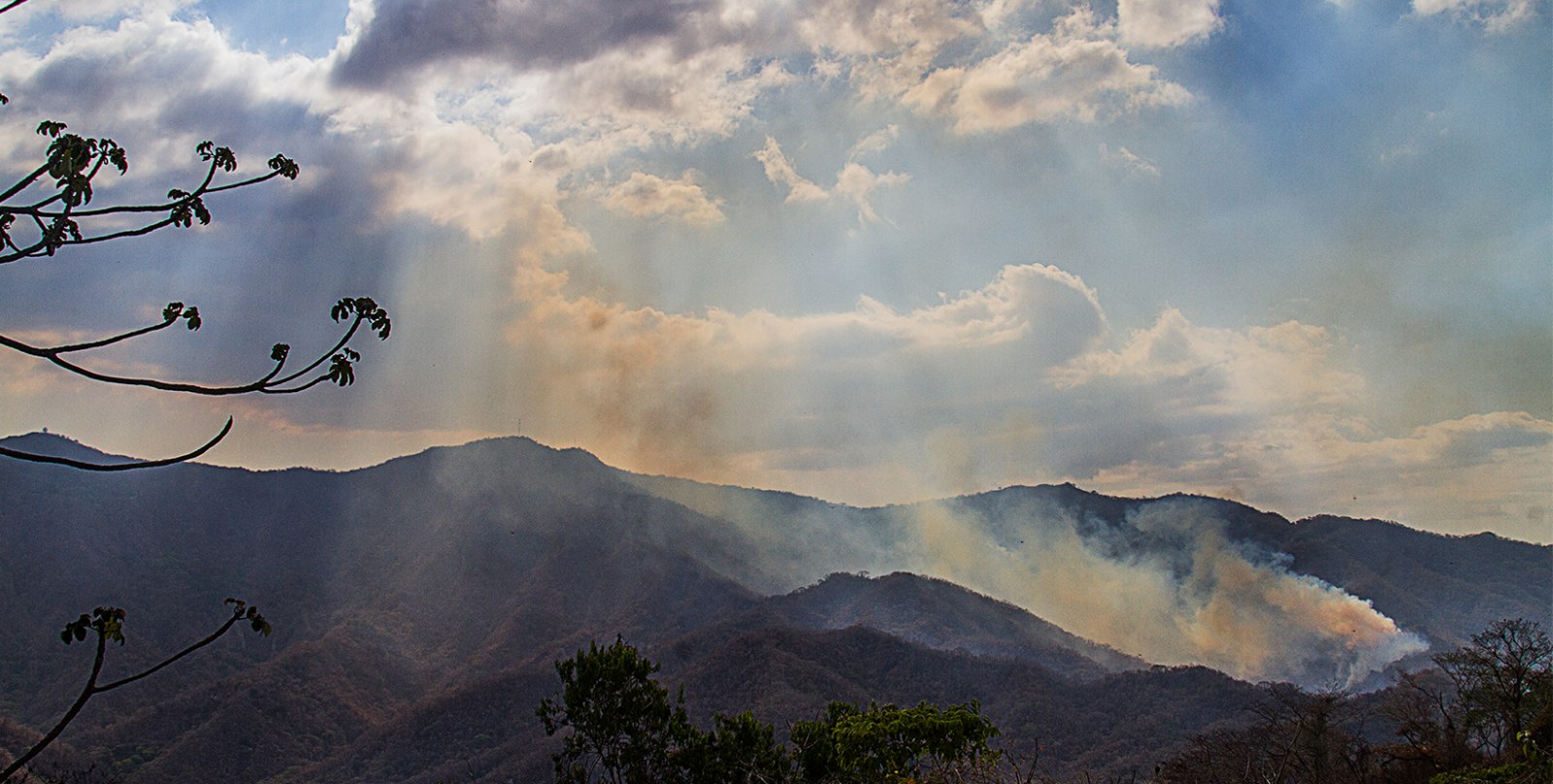
With the help of the rain, the fire brigade from different parts of Guanacaste finally managed to control the fire that began on April 7th, violently lashing through Diria National Park, located between the cantons of Santa Cruz and Nicoya.
Despite getting the fire under control, the damage is irreversible. According to Nelson Marin, director of the Tempisque Conservation Area (ACT- Area de Conservacion Tempisque), the fire swept through more than 3000 hectares (7400 acres) of forest.
“The preliminary information that we have is that the fire burned some 3,500 hectares (8650 acres) of forest that were under conservation for more than 30 years. It was brought under control on the 20th day of this month (April) and the rain that fell collaborated. However, we are staying alert to prevent the fire from being incorporated,” Marin said.
Marin also said that the Public Minister is investigating whether there was a criminal hand involved since there are rumors of people that indicate suspicions in this case.
Diria Park covers an area of 5420 hectares (13,390 acres), so the loss is estimated at 75%, including primary and secondary forest.
The park protects the headwaters of the rivers En Medio, Tigre and Diriá. It is characterized by forests typical to the tropical dry climate in the lowland areas, and a very humid premontane forest in the highlands, similar to the forest in the highlands of Cordilleras in the middle of the country.
According to biologist Johnny Villarreal, from the State Distance Learning University (UNED- Universidad Estatal A Distancia) of Nicoya, Diria Park is the only protected area in Nicoya Peninsula with an altitude ranging from 130 to 983 meters (425 to 3225 feet) high.
It is an area with a unique distribution of animals and plants, which means that no other place in the country has these species.
About 228 species of plants, 20 species of amphibians and reptiles, 94 species of birds and 32 species of mammals have been documented there, as well as a variety of bats (Chrotopterus auritus, Sanborn’s bonneted bat, Underwood’s bonneted bat, Molossops greenhalli, Miller’s mastiff bat) that are strange carnivorous and insectivorous species recently discovered in Diria.
To Villarreal, the biodiversity in this park is the result of the hard work of nature that was destroyed in hours.
“We have seen how, in a few days, thousands of years of evolution have been destroyed by a single element, the fire caused by the very people who use the resources produced by Diria National Park,” Villarreal said.







Comments